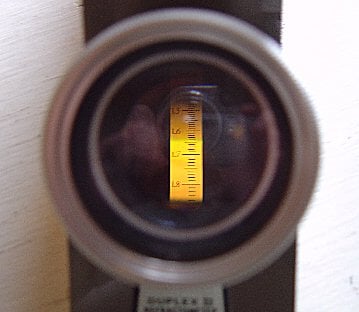How to Re-Polish a Refractometer Hemicylinder
The glass used to make refractometer hemicylinders is susceptible to tarnish. Here's a step-by-step guide for re-polishing a refractometer hemicylinder.
1 Minute Read
Answer: The refractometer hemicylinder or hemisphere can oxidize over time and interfere with refractive index readings. Fortunately, removing the tarnish isn't difficult.
Removing Tarnish From a Refractometer Hemicylinder
I had a similar problem after buying a used GIA Duplex II refractometer for my business. The problem you're experiencing is common, because the high lead content of the glass makes the refractometer hemicylinder surface susceptible to tarnish.
To remedy this, you'll need to re-polish the hemicylinder. This is easier than it sounds. You'll need some common supplies for lapidaries and about 15 minutes.
- Mix a small amount of cerium oxide with distilled water to make a thick paste. (The trick is to keep the liquid level low. Too much water and you'll have a whole new set of problems).
- Take a piece of cotton, like an old T-shirt, dab it in the paste, and transfer some of the mixture to the refractometer hemicylinder. (Try to avoid the edges).
- Begin by rubbing the surface of the hemicylinder in a circular motion. This will remove the tarnish or oxidation very slowly. (Rubbing in a circular motion avoids directional scratches).
- Continue polishing for about 5 to 6 minutes.
- Wipe the refractometer hemicylinder clean with a clean piece of cloth.
Obviously, it's been a while since your refractometer was last polished, so you might have to re-polish the surface of your hemicylinder three or four times before you remove all the tarnish and get a crystal-clear reading. Basically, you're polishing the glass much like you would a gemstone, so be patient and thorough.
I recommend re-polishing the refractometer hemicylinder every six months to keep your readings accurate. Gemologists do this on a regular basis to get a sharp, clear dilation line for accurate measurements.
Douglas LeGrand, GG
A Sign of Possible Oxidation on Your Refractometer Cylinder
One indication of possible oxidation on the table of your refractometer cylinder is if you can see any rainbow banding on its surface. This isn't a guarantee that it's oxidized, however. (Editor's note: rainbow colors may also indicate the presence of extraneous light).
Roy Auerbach
International Gem Society
Related Articles
Tucson Gem and Mineral Show Reviews
Can Wearing Gems That Touch Your Skin Improve Your Health?
How to Dry Opals Safely
Does Synthetic Jade Exist?
Latest Articles
Opal Buying Guide
Amethyst Sources Around the World: The Geological Story Behind These Purple Gemstones
Brazilianite Value, Price, and Jewelry Information
Ruby-Glass Composites vs Leaded Glass Clarity Enhancements
Never Stop Learning
When you join the IGS community, you get trusted diamond & gemstone information when you need it.
Get Gemology Insights
Get started with the International Gem Society’s free guide to gemstone identification. Join our weekly newsletter & get a free copy of the Gem ID Checklist!
